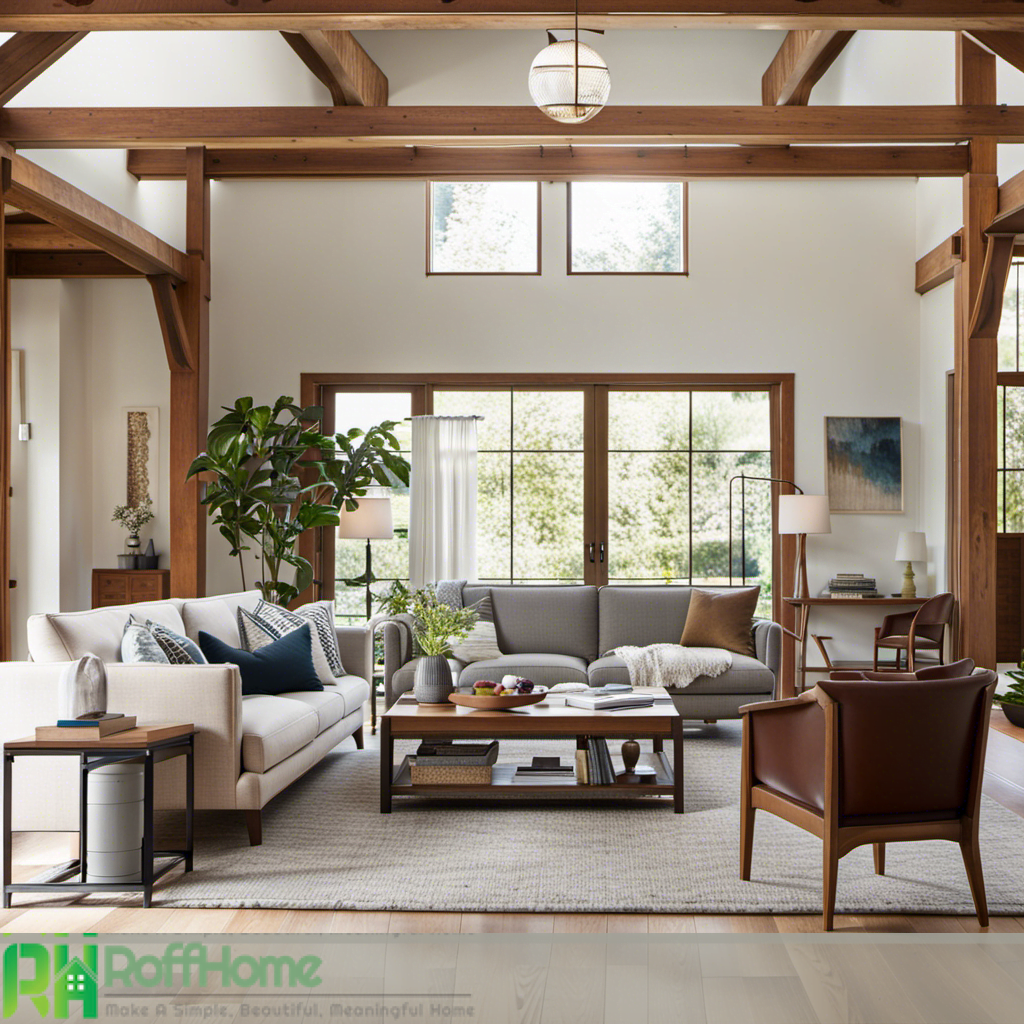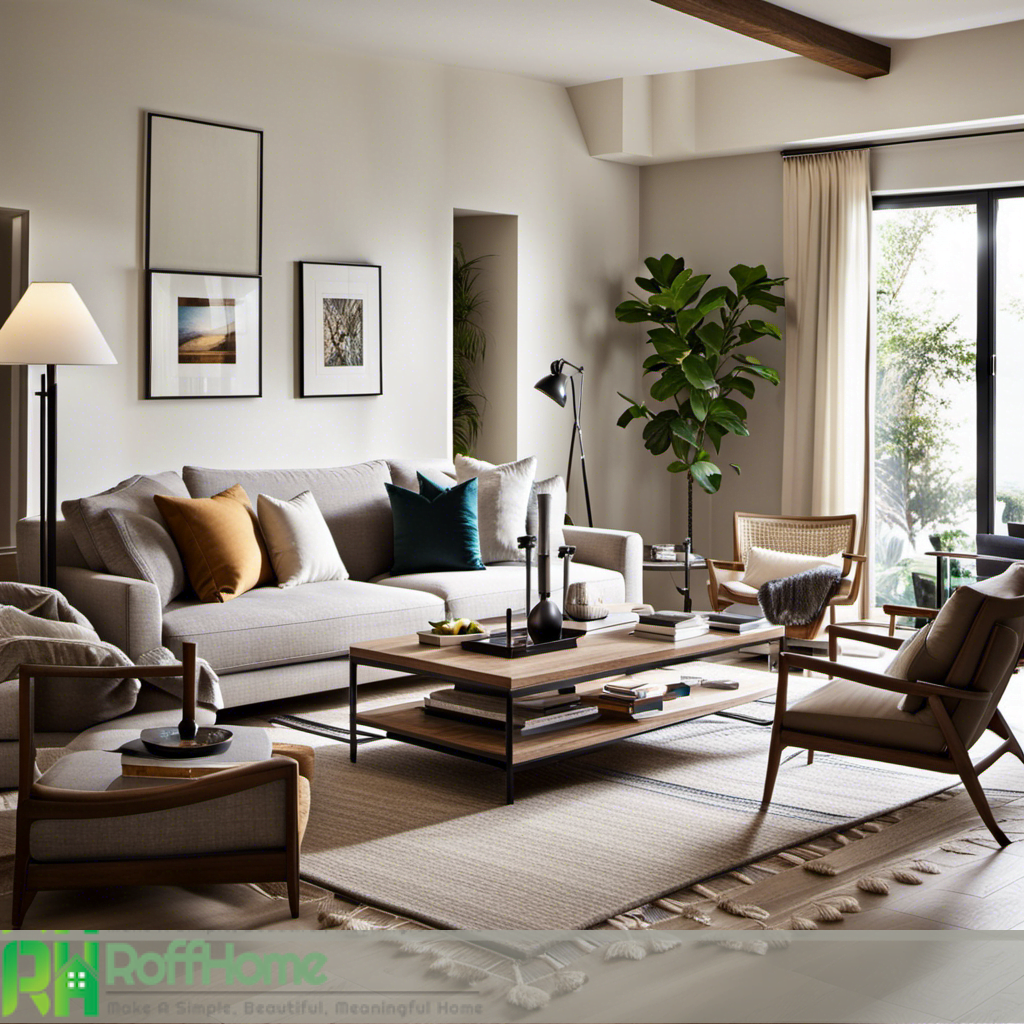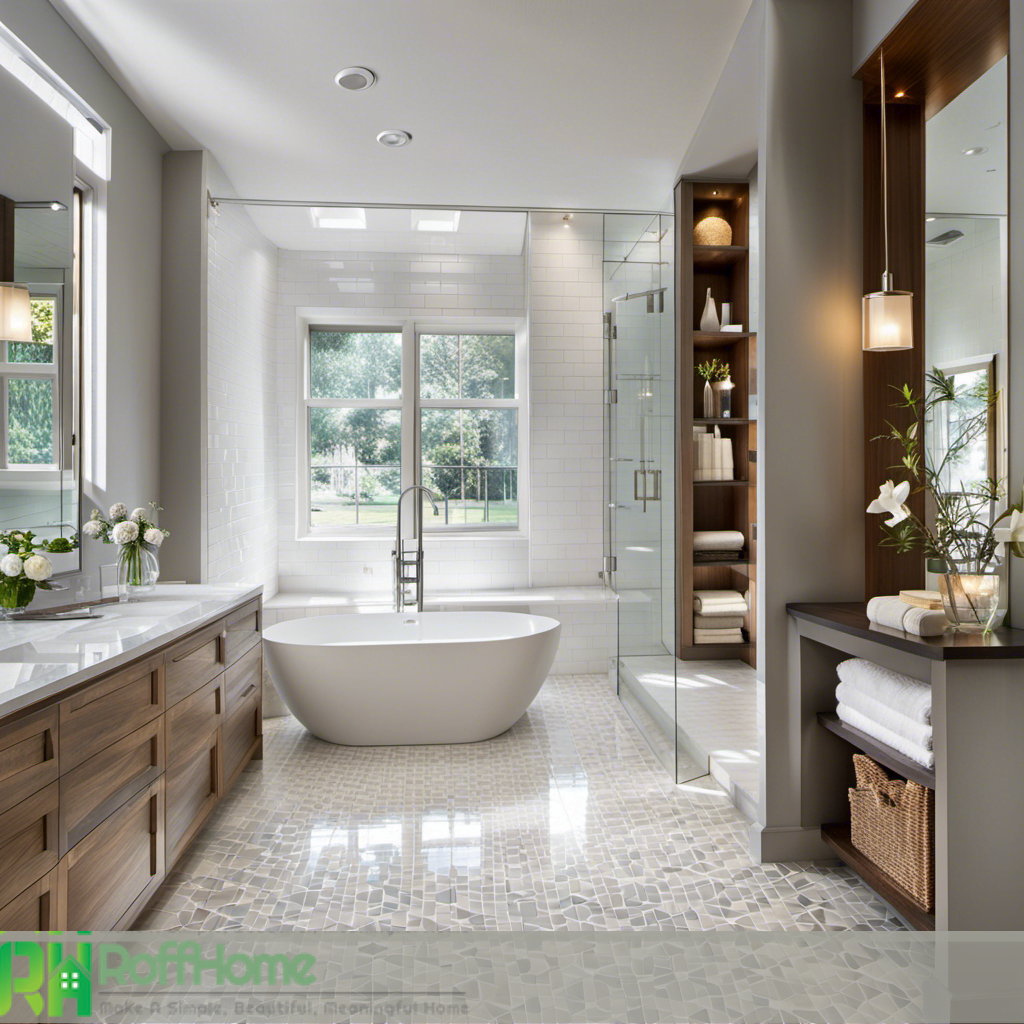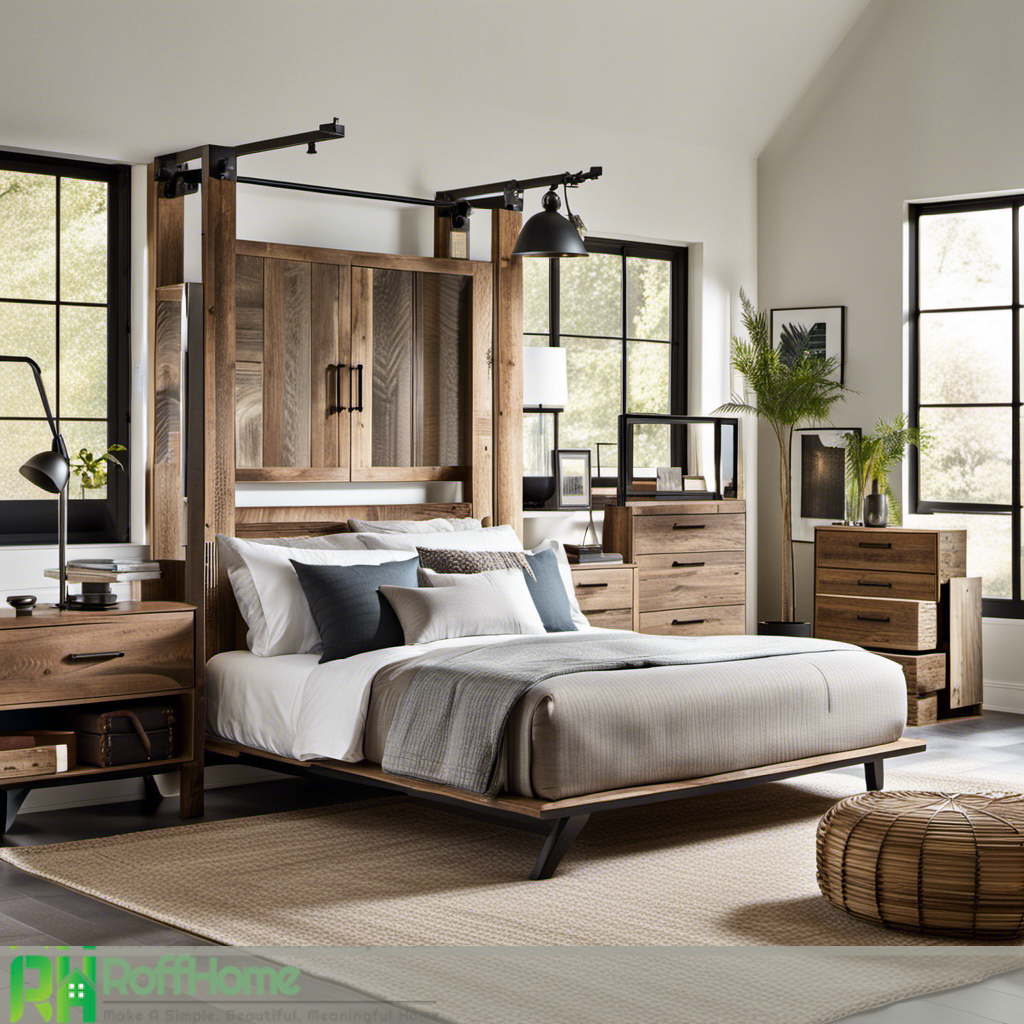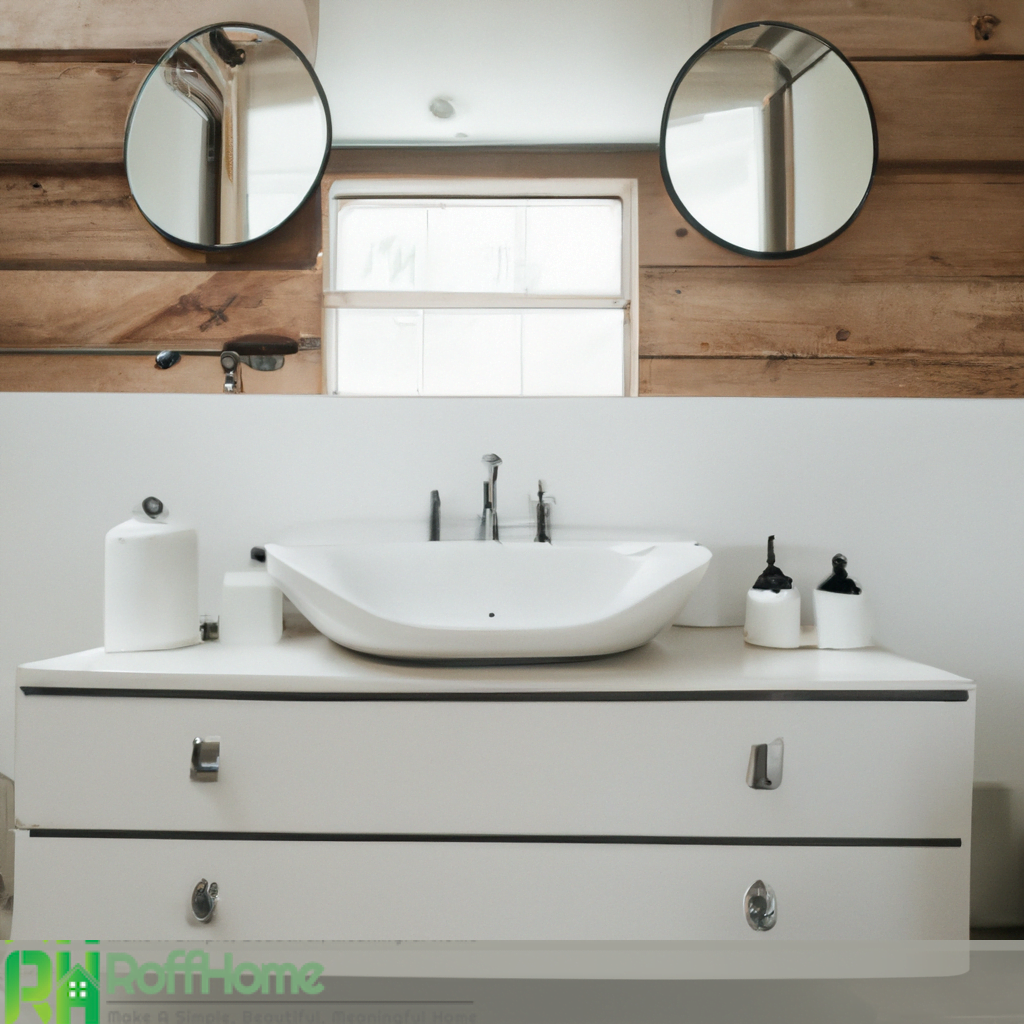Elevate Your Bedroom Design: Stunning Wood Wall Behind Bed for Rustic Charm
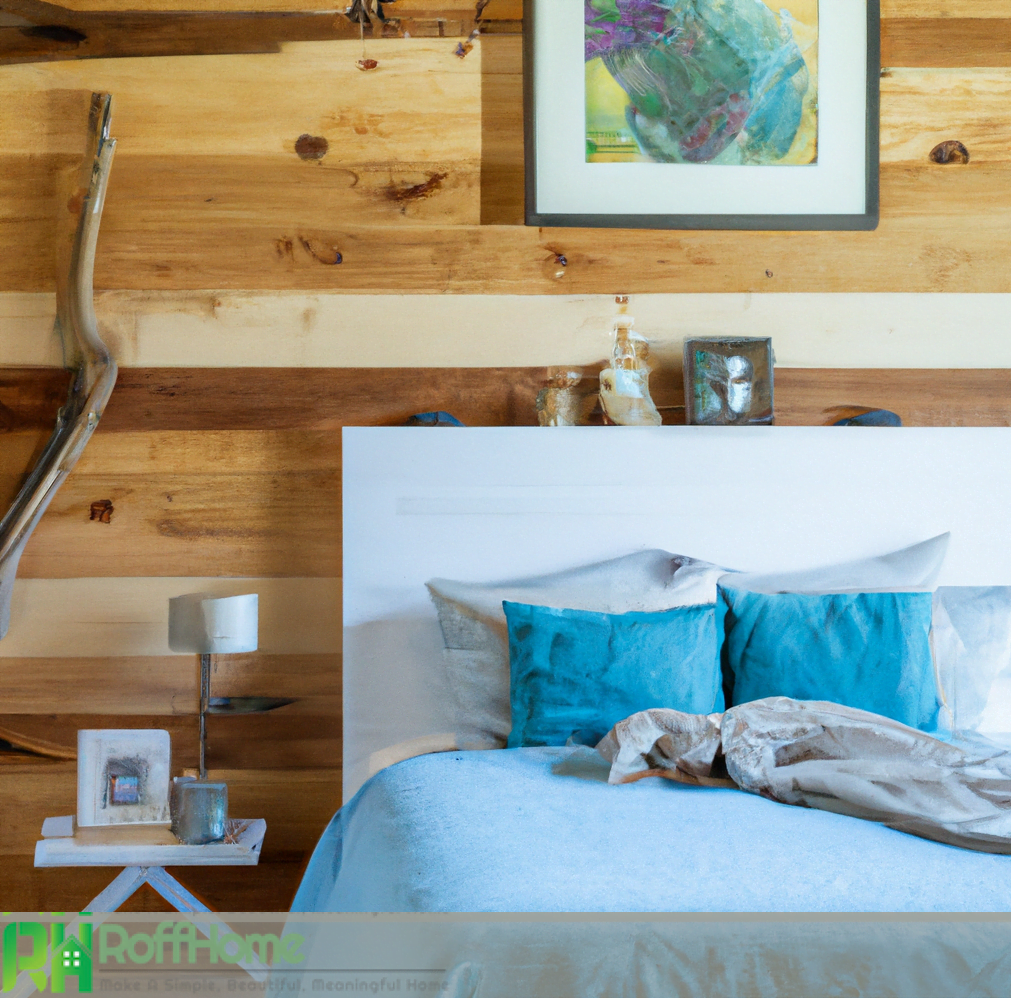
The wood wall behind bed has emerged as a captivating trend in contemporary bedroom decor. Serving as a focal point and accent wall, it adds an element of warmth and sophistication to any space. The choice of wood and the meticulous installation can genuinely transform a bedroom, creating a striking feature that elevates the overall aesthetics and ambiance.
When it comes to wood walls, there are various types of wood to choose from, each with unique characteristics and appeal. Whether it’s the rich tones of oak, the timeless beauty of walnut, or the rustic charm of reclaimed wood, selecting the correct type of wood is crucial in achieving the desired look and feel.
Installing a wood wall behind the bed can be a rewarding DIY project for those who enjoy hands-on activities. With a comprehensive step-by-step guide, one can easily navigate the process, ensuring a seamless and professional-looking result. Every detail counts in creating a stunning wood wall installation, from measuring and preparing the wall to securing the wood panels and applying the perfect finish.
Beyond its visual appeal, a wood wall provides acoustic comfort and sound insulation, creating a serene and peaceful sleeping environment. Additionally, proper maintenance and care tips are essential for preserving the beauty and longevity of the wood, including selecting the right stain, paint, or sealant and implementing a regular cleaning routine.
Wood Wall Designs: From Rustic to Modern and Everything in Between
Wooden walls have become a popular choice in interior design, adding a touch of warmth, texture, and natural beauty to any space. From rustic to modern aesthetics, wood wall designs offer various options for different styles and preferences.
Rustic Charm: Rustic wood wall designs evoke a cozy and inviting atmosphere. Reclaimed wood’s weathered texture and distressed appearance bring a sense of history and character to a room. The wood’s uneven edges and natural imperfections create a unique and authentic look, perfect for creating a rustic-inspired space.
Vintage Elegance: Vintage wood wall designs often feature intricately carved or ornate wooden panels. These designs add a touch of old-world charm and elegance to any room. The wood is usually stained or painted in rich, classic hues, enhancing the vintage aesthetic.
Modern Minimalism: Clean lines, sleek finishes, and minimalist designs characterize modern wood wall designs. These designs often feature smooth, unadorned wood panels, creating a contemporary and sophisticated look. Lighter wood tones or even painted wood in neutral colors can achieve a minimalist vibe.
Geometric Patterns: Wood wall designs can incorporate geometric patterns, adding visual interest and a modern touch. Whether it’s a herringbone pattern, chevron, or geometric shapes arranged in a mosaic-like fashion, these designs create a dynamic and eye-catching feature on the wall.
Statement Walls: Wood can create a dramatic and impactful statement wall. Large wood panels or planks arranged in an unconventional pattern, such as a diagonal or staggered layout, draw attention and become the room’s focal point. This design approach works well in living rooms, bedrooms, or dining areas.
Mixed Materials: Wood wall designs can also be combined with other materials to the create a unique look. For example, integrating wood with metal, glass, or stone can create a visually striking and contemporary design. Combining contrasting textures and materials adds depth and complexity to the overall aesthetic.
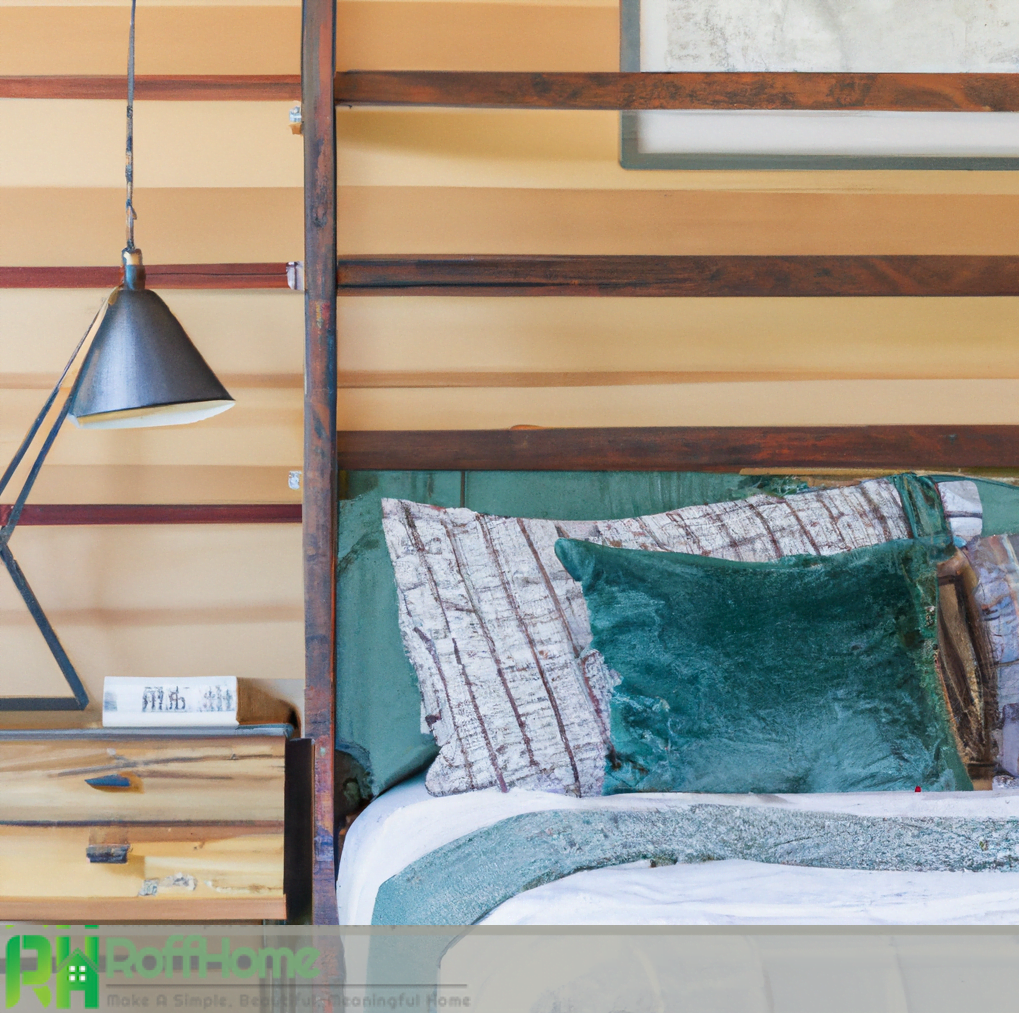
Creating a Rustic Retreat: Wood Wall Ideas for Bedroom
Incorporating wood walls can be a perfect choice when designing a cozy and inviting bedroom with a rustic ambiance. Wood wall ideas for the bedroom add warmth and natural beauty and create a sense of tranquility and a rustic retreat-like atmosphere. Here are some inspiring wood wall ideas to transform your bedroom into a rural haven.
Reclaimed Barn Wood: Utilizing reclaimed barn wood for your bedroom walls brings a unique and authentic rustic charm. The weathered texture, distressed marks, and natural patina of the wood add character and tell a story. The earthy tones and rough surfaces create a warm and cozy feel, making your bedroom a true rustic retreat.
Shiplap Paneling: Shiplap paneling is a classic choice for a rustic look. The horizontal arrangement of wooden planks adds visual interest and a timeless appeal.
Log Cabin Walls: Embrace the rustic charm of a log cabin by incorporating log walls into your bedroom. The natural, raw texture of the logs brings a sense of the outdoors inside, creating a cozy and rustic ambiance. Leave the records unfinished or give them a light stain to preserve their natural beauty.
Wood Accent Wall: Create a focal point in your bedroom by installing a wood accent wall behind your bed. Choose wood planks with varying widths or a unique pattern, such as herringbone or chevron, to add visual interest.
Whitewashed Wood: Consider whitewashing your wood walls for a more light and airy rustic feel. This technique involves applying a diluted white paint or stain to the wood, allowing the natural wood grain to show through. The result is a rustic yet slightly distressed look that brightens your bedroom.
Log Slices or Wood Pallets: For a creative and budget-friendly approach, consider using log slices or repurposed wood pallets as wall coverings. Arrange the log slices or pallets in a mosaic-like pattern for a unique rustic wall design. The natural textures and uneven edges add rustic charm to your bedroom.
Choosing the Perfect Wood for Bedroom Wall
When selecting wood for a bedroom wall, it’s essential to consider the aesthetic appeal and the durability, maintenance requirements, and overall suitability for the desired look and feel of the space.
Wood Types: Different wood species offer unique colors, grain patterns, and texture characteristics. Common choices for bedroom walls include oak, pine, cedar, walnut, and reclaimed wood. Each wood type has its charm and can contribute to the room’s overall aesthetic. For a rustic look, reclaimed wood, with its weathered appearance, can add character, while walnut or oak can lend a more elegant and refined feel.
Durability: Bedrooms are low-traffic compared to other parts of the house, but choosing a wood that can withstand daily wear and tear is still essential. Hardwoods like oak, walnut, and cherry are known for their durability, making them suitable for bedroom walls. Softwoods like pine and cedar are popular choices and can be treated or sealed to improve their resistance to scratches and dents.
Maintenance: Consider the level of care required for the wood you choose. Some woods may require regular sealing or staining to maintain their appearance and protect them from moisture and other elements. Others, like reclaimed wood, may have a more rustic and weathered look that can withstand minor imperfections without much maintenance.
Sustainability: If eco-friendliness is essential, consider selecting wood from sustainable sources. Look for wood certified by organizations such as the Forest Stewardship Council (FSC), which ensures responsible forest management and promotes the use of sustainably harvested wood.
Budget: Wood options can vary significantly in terms of cost. Exotic or rare woods may be more expensive, while more common varieties like pine or cedar may be more budget-friendly. Consider your budget and choose a wood that fits within your financial constraints.
Personal Preference: Ultimately, the choice of wood for your bedroom wall should reflect your taste and the desired ambiance. Consider the color and grain pattern that appeals to you and complements the overall bedroom decor.
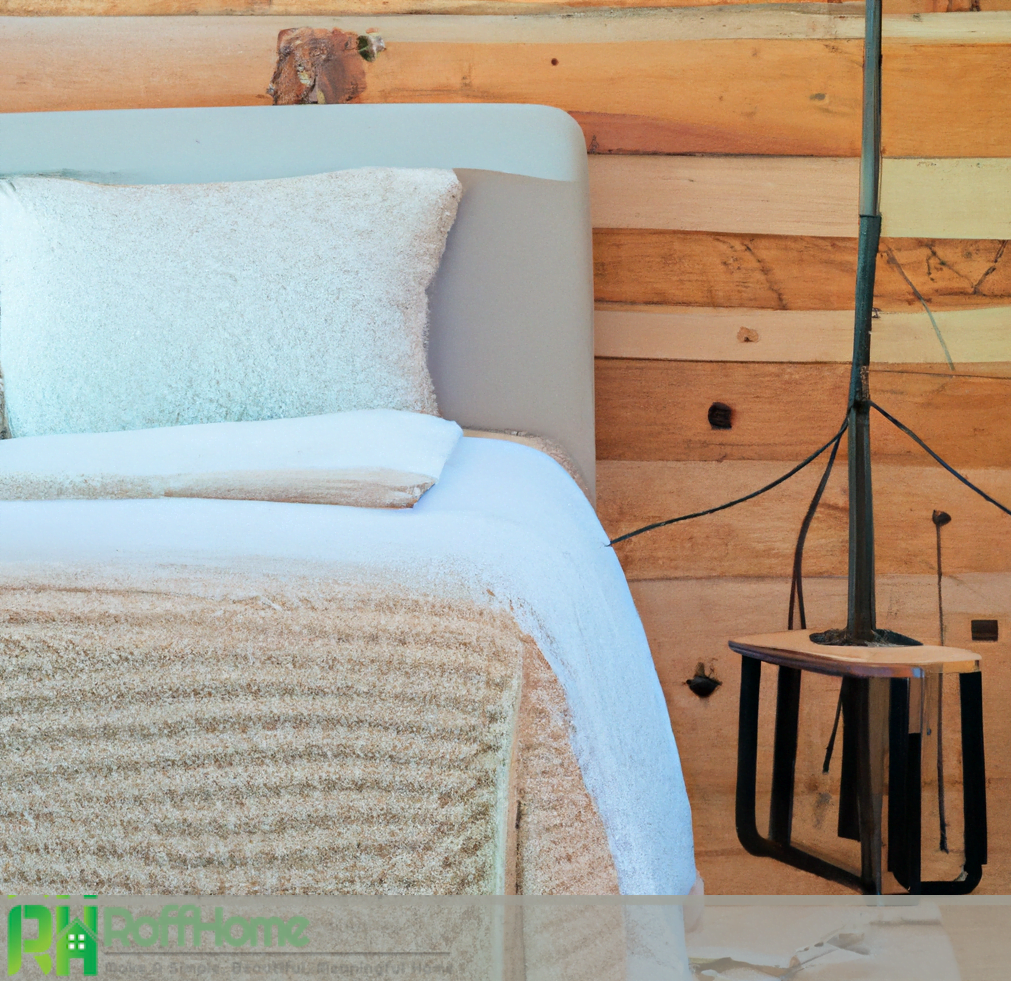
The Psychological Effects of Wood in Bedroom Decor
The choice of materials in bedroom decor can significantly impact our psychological well-being and overall mood. Wood, in particular, is unique in creating a soothing and harmonious atmosphere in the bedroom. Here are some of the psychological effects of incorporating wood into bedroom decor.
Warmth and Comfort: Wood has a natural warmth that creates a cozy and inviting ambiance in the bedroom. Its earthy tones, and organic textures evoke a sense of comfort and security, making us feel more at ease and relaxed in our sleeping environment.
Connection to Nature: Wood is inherently associated with nature, and bringing natural elements indoors has been shown to have positive psychological effects. In the bedroom, wood connects us to the outdoors, creating a sense of grounding and tranquility. This connection to nature can reduce stress levels and promote well-being.
Biophilic Benefits: Biophilia, the innate human tendency to seek connections with nature, has been widely studied and recognized for its positive effects on mental health. Wood in bedroom decor aligns with this biophilic concept, providing a visual and tactile connection to the natural world. This connection can promote relaxation, reduce anxiety, and improve overall mood.
Serenity and Calmness: Wood has a soothing effect on our emotions, creating a serene and peaceful atmosphere in the bedroom. Its natural patterns and textures induce a sense of tranquility, helping to create a space conducive to quality sleep and rest.
Timeless Beauty: Wood possesses a timeless beauty that transcends trends and fads. Its enduring appeal brings a sense of stability and familiarity to the bedroom, providing a comforting backdrop for relaxation and sleep. This sense of continuity can contribute to a feeling of emotional well-being.
Improved Cognitive Function: Studies have shown that exposure to natural materials like wood can improve cognitive function and concentration. Wood in the bedroom may enhance focus and productivity during daytime activities, such as reading or working.
Budget-Friendly DIY Options: How to Achieve a Wood Wall Behind Bed
Creating a wood wall behind the bed can be a stunning focal point in your bedroom, adding warmth and character to the space. If you’re on a budget, several cost-effective DIY options can help you achieve a beautiful wood wall without breaking the bank. Here are some ideas to consider:
Pallet Wood: One of the most affordable options for a DIY wood wall is to repurpose wooden pallets. Pallets can be easily sourced for free or at a minimal cost. Disassemble the pallets and sand down the planks to remove any rough edges. Then, arrange and secure the planks to the wall in a desired pattern using nails or adhesive.
Plywood: Another budget-friendly option is to use plywood as the base material for your wood wall. Look for sanded plywood sheets that have a smooth surface. You can leave the plywood as-is for a minimalist look or finish it with paint, stain, or sealant.
Plank Paneling: Opting for tongue-and-groove or shiplap plank paneling is a cost-effective way to achieve a wood wall behind the bed. These pre-cut panels are available at home improvement stores and come in various wood species and finishes. Install the panels horizontally or vertically, depending on your preferred aesthetic.
Engineered Wood Flooring: The engineered wood flooring can be a creative and affordable alternative for a wood wall. Look for discounted or discontinued flooring options that can be repurposed for your project. Cut the flooring planks to size and attach them to the wall using construction adhesive or nails.
Painted MDF Boards: Medium-density fiberboard (MDF) boards are inexpensive and versatile. Cut the boards into desired sizes and paint them in your chosen color. Arrange and secure the painted panels to the wall in a pattern of your choice. This option allows you to achieve the look of a wood wall while staying within your budget.
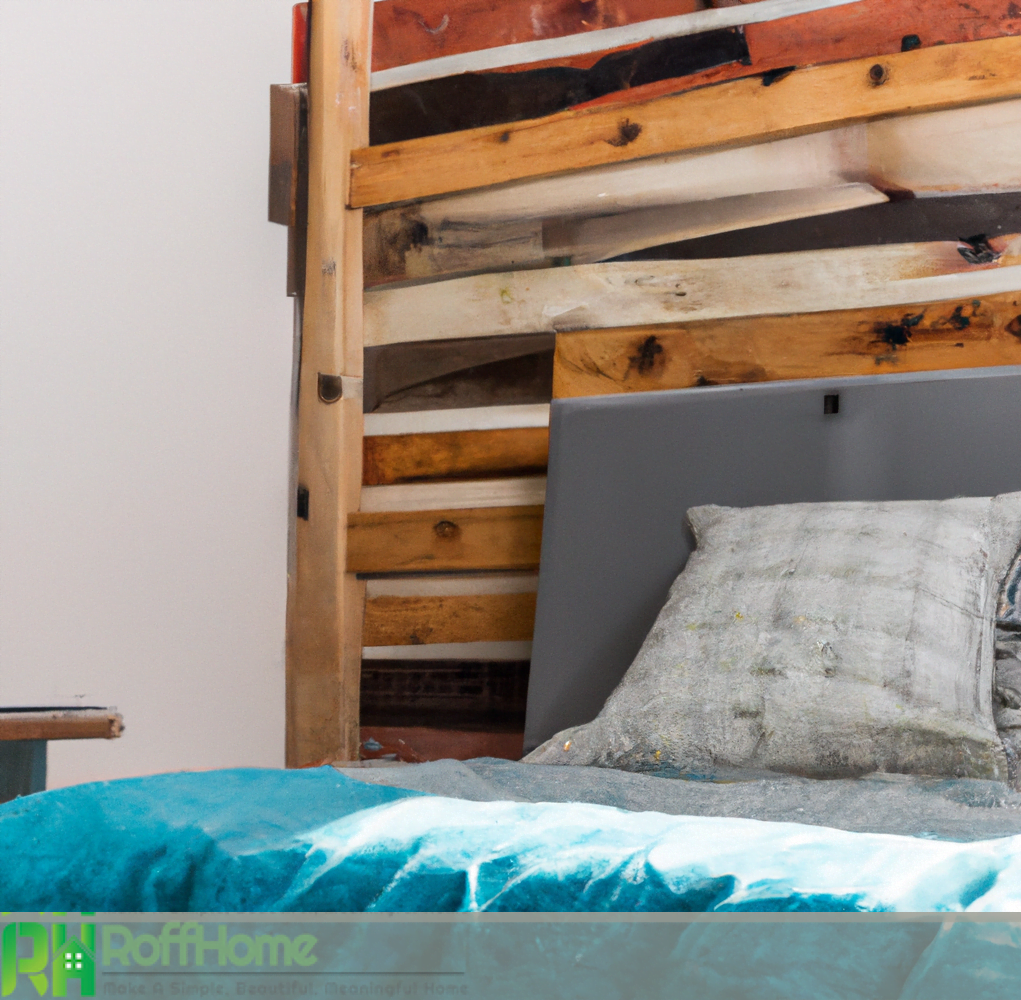
Step-by-Step Guide: How to Install a Wood Wall Behind Bed
Installing a wood wall behind the bed can be a rewarding and transformative DIY project. It adds warmth and visual interest to your bedroom, creating a striking focal point. Here is a step-by-step guide to help you successfully install a wood wall behind your bed:
Plan and Measure:
- Begin by planning the design and layout of your wood wall.
- Measure the area behind the bed to determine the amount of wood needed.
- Consider the size and arrangement of wood panels or planks, and decide on any patterns or deals you want to incorporate.
Prepare the Wall:
- Ensure that the wall is clean, smooth, and free from any imperfections.
- Remove any existing wallpaper, paint, or debris.
- If necessary, repair any cracks or holes the wall to create a smooth surface for the wood installation.
Acclimate the Wood: If using solid wood panels, allow them to acclimate to the room’s temperature and humidity for at least 48 hours. This helps prevent the warping or shrinking of the wood after installation.
Install the First Row:
- Start at the bottom of the wall and install the first row of wood panels or planks.
- Use a level to ensure they are straight and even.
- Attach the wood to the wall using construction adhesive or nails, depending on your chosen method.
Continue Installation:
- Install subsequent rows, working your way up the wall.
- Apply adhesive or nails to each piece, ensuring a secure and uniform installation.
- Use spacers or shims to maintain consistent gaps between the wood panels, if desired.
Cut and Trim:
- Measure and cut wood panels to fit around outlets, switches, or other obstacles.
- Use a jigsaw or a circular saw for precise cuts.
- Trim the top row of wood to work against the ceiling, using a coping or miter saw for angled or accurate cuts.
Finishing Touches:
- Once all the wood panels are installed, inspect the wall for any loose pieces.
- Fill any nail holes or the cracks with wood filler and sand the surface for a smooth finish.
- Apply a wood stain, paint, or sealant to protect and enhance the wood’s appearance.
Enjoy Your Wood Wall: Allow the finish to dry completely before arranging your bed and bedroom decor against the wood wall. Step back and admire your beautiful, newly installed wood wall, which adds warmth and character to your bedroom space.
Maintaining and Cleaning Wood Wall Behind Bed
Once you have installed a beautiful wood wall behind bed, it’s essential to properly maintain and clean it to preserve its beauty and ensure its longevity. Regular maintenance will keep the wood wall looking its best and protect it from damage. Here are some essential tips for maintaining and cleaning your wood walls:
Dusting:
- Dust the wood wall regularly to prevent the accumulation of dirt and debris.
- Use a soft, dry microfiber cloth or a feather duster to remove dust from the surface gently.
Cleaning Solutions:
- Use a mild wood cleaner or a mixture of warm water and gentle soap for routine cleaning.
- Wipe the wood wall toward the grain, taking care not to saturate the wood.
Stain or Paint Touch-ups: If your wood walls has been stained or painted, periodically inspect it for any signs of wear or fading. Touch up any areas where the stain or paint has worn off to maintain a consistent and fresh appearance.
Sealant and Finish: If your wood walls has been finished with glue or varnish, periodically check the condition of the finish. If it shows signs of wear or the damage, consider reapplying a fresh coat of sealant to the protect the wood and enhance its beauty.
Spills and Stains: Accidental spills should be cleaned up promptly to prevent staining or damage to the wood. Blot the fall with a clean cloth or paper towel, then clean area with a mild wood cleaner. Avoid harsh chemicals or abrasive scrubbers, which can damage the wood surface.
Avoid Moisture and Direct Sunlight: Wood is sensitive to changes in moisture and can warp or become discolored if exposed to excessive moisture or direct sunlight. Keep the wood wall away from humidifiers, open windows, and areas prone to water splashes.
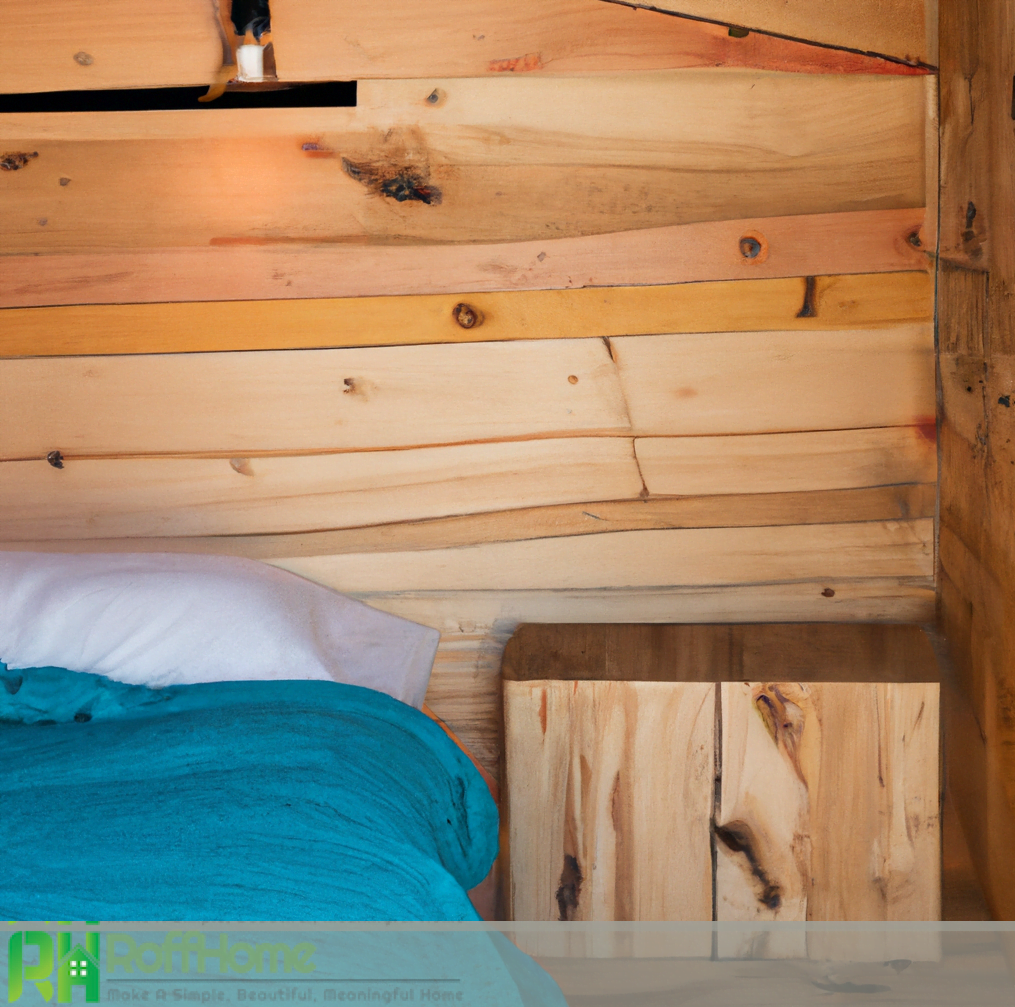
The Beauty and Benefits of a Wood Wall Behind Your Bed
A wood wall behind bed can be a stunning and impactful addition to your bedroom decor. It enhances the visual appeal of space and offers numerous benefits that contribute to a comfortable and inviting atmosphere. Here are some of the beauty and benefits of having a wood wall behind your bed:
Aesthetics: A wood wall adds natural warmth, texture, and character to your bedroom. The grains and patterns of the wood create a visually appealing backdrop that adds depth and interest to the room. Whether you choose a rustic, weathered look or sleek and modern paneling, a wood wall can complement various design styles, from traditional to the contemporary.
Focal Point: A wood wall behind bed can act as a focal point in the room, drawing attention and creating a striking feature. It provides a visually pleasing backdrop for your bed, making it the space’s centerpiece. This focal point can help tie the room together and create a cohesive design.
Acoustic Comfort: Wood has natural sound-absorbing properties, which can contribute to acoustic comfort in the bedroom. It helps to reduce echo and noise transmission, creating a more peaceful and serene environment for sleep and relaxation.
Insulation: Wood acts as a natural insulator, helping to regulate temperature and improve energy efficiency. A wood wall behind your bed can provide an additional layer of insulation, keeping your bedroom cozy in colder months and potentially reducing heating costs.
Durability: The wood is a durable material that can withstand the test of time. Properly maintained, a wood wall behind your bed can last for years, retaining its beauty and charm. Wood walls are less prone to visible wear and tear than painted walls, making them a long-lasting investment.
Versatility: Wood walls offer versatility in terms of customization. You can choose from wide range of wood species, finishes, and patterns to achieve your bedroom’s desired look and feel. Whether you prefer a rustic charm with weathered wood or a sleek and contemporary design with smooth paneling, wood walls can be tailored to your style.
Connection to Nature: Wood is a natural material that brings a sense of the outdoors into your bedroom. It creates a connection to nature, providing a soothing atmosphere. This connection can promote relaxation, reduce stress, and contribute to a sense of well-being.
In conclusion, a wood wall behind bed is a beautiful and versatile addition to any bedroom. Its aesthetic appeal, focal point potentials, and various benefits, such as acoustic comfort and durability, bring natural warmth and character to create a truly inviting and harmonious sleeping environment.

